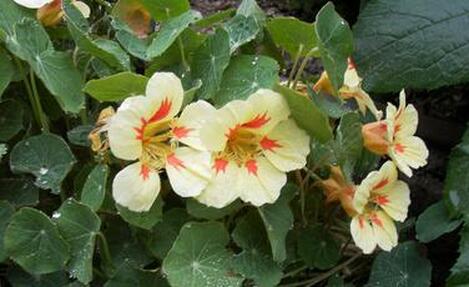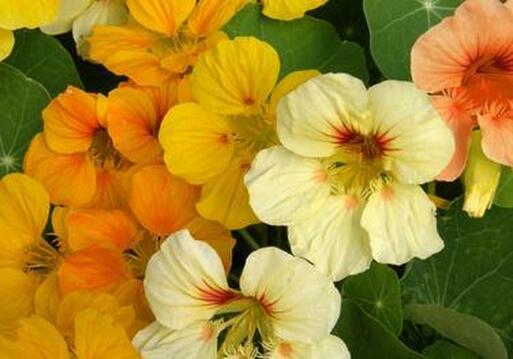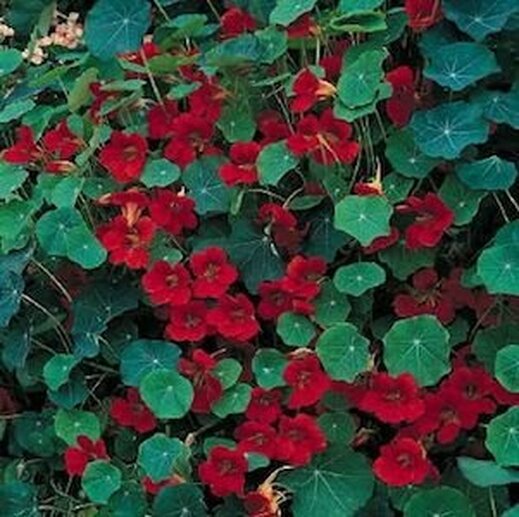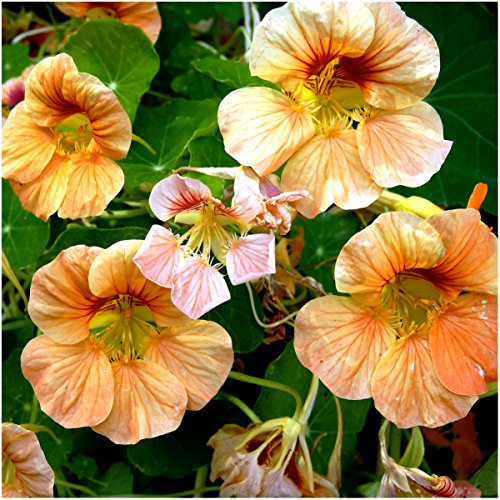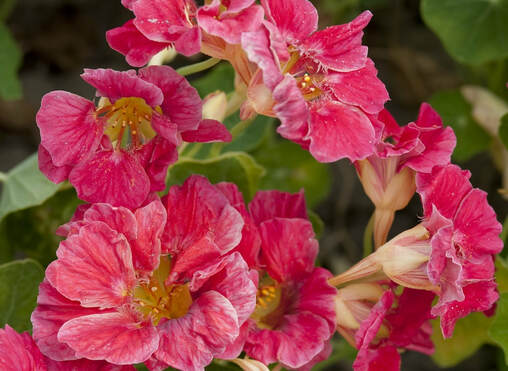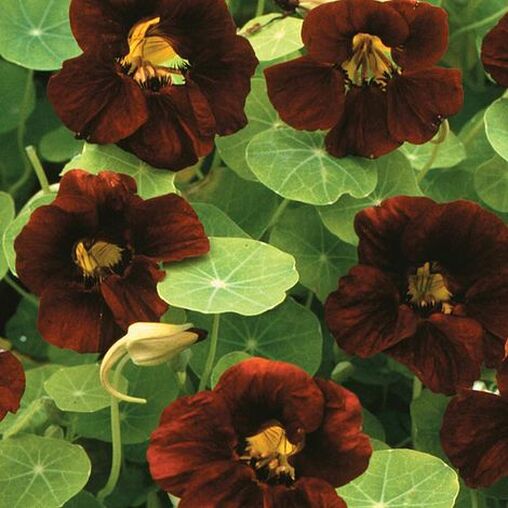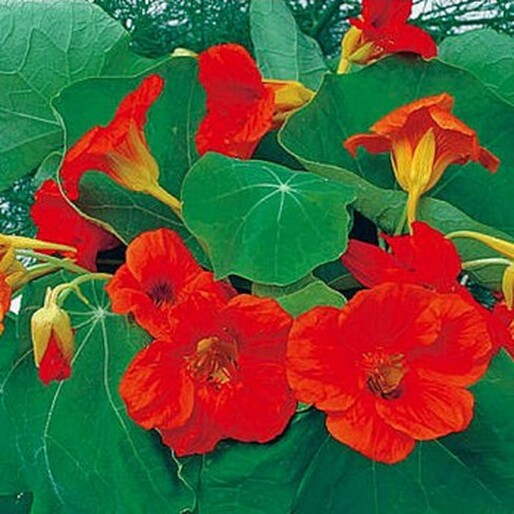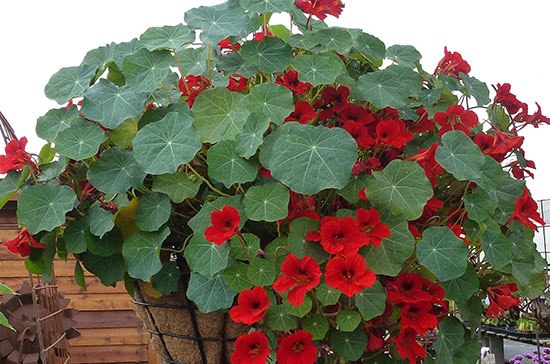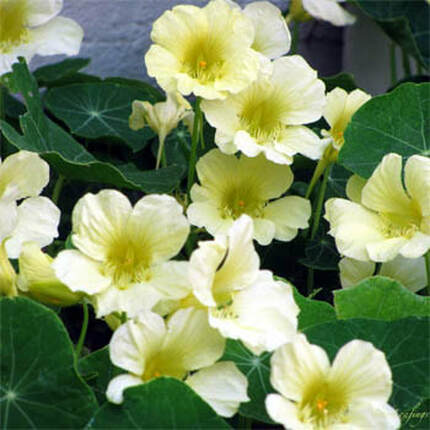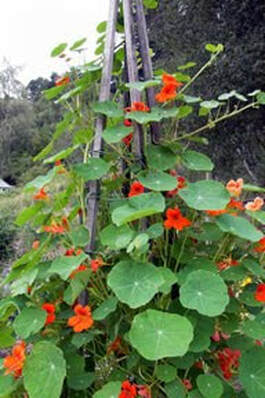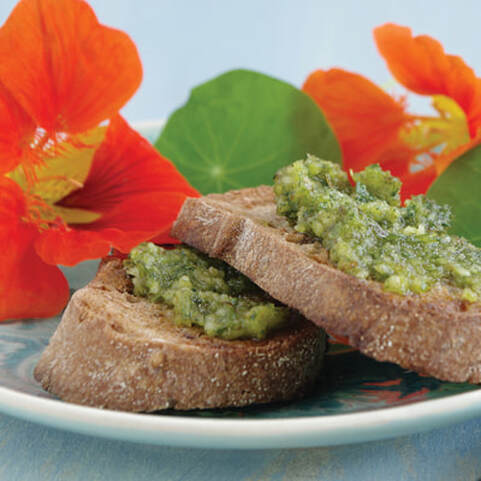|
3/26/2019 4 Comments A Rainbow of NasturtiumsNasturtiums have a lot of good things going for them: easy to grow, undemanding, rabbit and deer tolerant, attract hummingbirds, come in a rainbow of colors, and they are edible. They can be categorized as either mounding Nasturtiums or climbing Nasturtiums. Most fall into the mounding category, growing 10-12" tall and similar spread, although some varieties can spread 2-3 feet. Ranging from the creamy flowers of 'Vanilla Berry' to the rich ruby of 'Black Velvet', how can you only choose one to grow? We certainly couldn't. That's why we have over a dozen varieties on our seed rack this spring. Here are a few of them: * Two heirloom Nasturtiums of note that are on our seed racks this year: 'Scarlet Gleam' has a semi-trailing habit making its brilliant red flowers perfect for hanging baskets and containers. 'Empress of India' is one of the oldest Nasturtiums known to exist. This prolific heirloom produces deep crimson flowers and has blue-green foliage. Finally, the climbers. Imagine these lovely, edible flowers clamoring up a trellis or spilling over a wall. 'Moonlight' bears soft yellow blossoms on twining vines and lily pad-shaped leaves. Another climber is 'Spitfire' with scarlet-red flowers that are a beacon for hungry hummingbirds. Both varieties grow 4-6 feet tall and can be trained to climb up short trellises. Use loose ties to get them started. GROWING TIPS: Nasturtium are easy to grow from seed which are odd-looking large seeds with a hard seed coat. They can take 7-14 days to germinate, so nicking them and soaking them in luke-warm water overnight will speed things up. It's best to sow the seed directly in the ground 1-2 weeks after the last average frost. Although not recommended, seeds can be started indoors 2-4 weeks before the last frost. Sow in biodegradable pots that can be directly planted in the ground. Plant in full sun or part shade and give them minimal care. They thrive on neglect! They also have beneficial properties in the garden making them good companions for zucchini and other squashes. One of the best features of Nasturtiums is that they are edible. The flowers' peppery flavor and the spicy, watercress-taste of the leaves are a welcome addition to fresh salads and sandwiches. Or use them in this pesto recipe from one of our favorite seed growers Botanical Interests.
NASTURTIUM PESTO 1 cup packed nasturtium leaves and stems, washed and dried 15–20 basil leaves 4 garlic cloves ½ cup pine nuts, lightly toasted ½ cup or more of extra virgin olive oil ½ cup Parmesan cheese, grated ½ teaspoon salt ½ tablespoon lemon juice Directions: Add all ingredients to a food processor or blender and blend until smooth, scraping the sides periodically to fully incorporate ingredients. Add more olive oil for desired consistency.
4 Comments
Phoebe
5/5/2020 01:18:52 pm
Hi,
Reply
Carolyn Ellertson
3/24/2022 10:12:02 am
I just let mine soak a long time.. like a couple days or more.. the outside husk will fall away. Inside there is a little seed about like a sweet pea seed..
Reply
Leave a Reply. |
|
|
STORE INFO
5205 Mormon Road Burlington, WI 53105 262.763.2153 |

